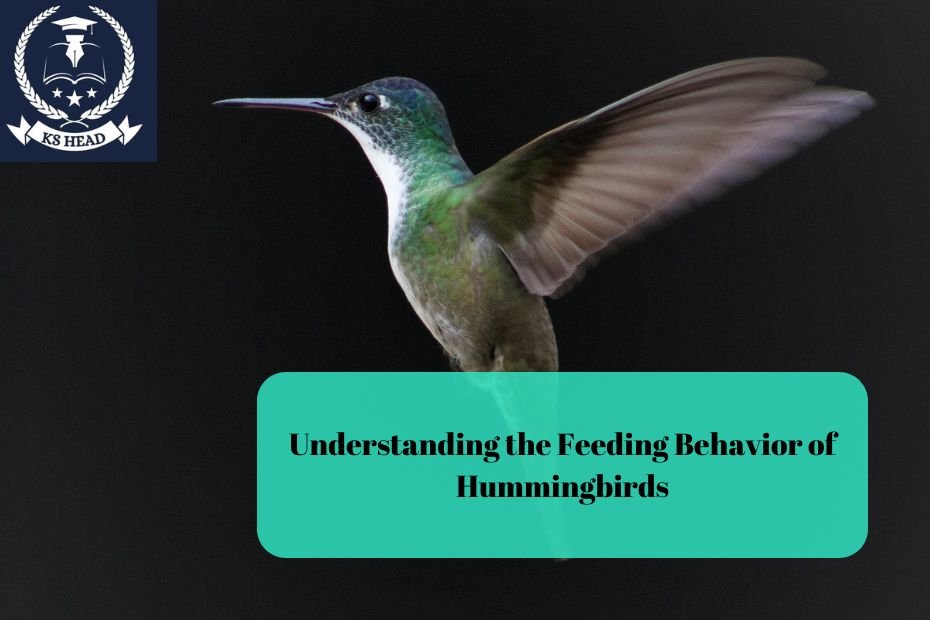Hummingbirds are some of the most fascinating creatures in the avian world. With their vibrant colors, rapid wingbeats, and tiny size, they captivate bird watchers and nature enthusiasts alike. However, one of the most intriguing aspects of hummingbirds is their feeding behavior. These little birds have a highly specialized diet and a unique way of consuming food that sets them apart from other species. This article will explore the various aspects of hummingbird feeding behavior, including their dietary preferences, feeding mechanisms, and their interaction with feeders, flowers, and their environment.
The Unique Anatomy of Hummingbirds
To understand the feeding behavior of hummingbirds, it’s essential to first examine their anatomy. Hummingbirds are built for rapid flight and efficient feeding, which are closely linked. A few key anatomical features contribute to their unique feeding habits:
- High Metabolism: Hummingbirds have one of the fastest metabolisms of any animal, requiring them to feed almost constantly to maintain their energy levels.
- Specialized Tongue: Their long, forked tongue can extend far beyond their beak to lap up nectar. Unlike some other birds, they don’t sip nectar; instead, their tongue rapidly flicks in and out of flowers or feeders to collect food.
- Hovering Ability: Hummingbirds are the only birds that can hover in place. This hovering ability is crucial for feeding because it allows them to access food sources, such as flowers, that might be difficult for other birds to reach.
- Rapid Wing Movement: Their wings beat at an incredible rate, up to 80 times per second. This fast wingbeat not only supports their hovering ability but also enables quick movements from flower to flower in search of food.
Dietary Preferences of Hummingbirds
Nectar as a Primary Food Source
Nectar is the primary food source for hummingbirds. It provides the high sugar content they need to fuel their energetic lifestyle. Hummingbirds are drawn to brightly colored flowers, particularly those that are red, orange, or pink, as these colors signal nectar-rich plants.
The sugar concentration in nectar typically ranges from 20% to 25%. If the nectar is too diluted, it won’t provide enough energy; if it’s too concentrated, it becomes difficult to digest. Hummingbirds have evolved to prefer nectar that has just the right balance of sugars.
Insects and Spiders
Although nectar makes up the majority of a hummingbird’s diet, it is not their only source of nutrition. Hummingbirds also consume small insects and spiders to meet their need for protein, fats, and vitamins. Insects provide essential amino acids, which are vital for growth, especially in young hummingbirds. Hummingbirds often catch insects mid-air or pluck them from plants and webs.
Common insects consumed by hummingbirds include:
- Gnats
- Aphids
- Small flies
- Ants
- Spiders
These insects are crucial for maintaining a balanced diet, especially during the breeding season when their energy requirements increase.
Tree Sap
In addition to nectar and insects, some hummingbirds have been known to consume tree sap. This behavior is more common in colder months when nectar sources are scarce. The sap from trees like maple contains sugars that hummingbirds can use as an energy source, much like nectar. They often obtain tree sap by feeding at holes created by woodpeckers.
How Hummingbirds Feed: The Science Behind Their Feeding Behavior
Tongue Action
One of the most extraordinary aspects of hummingbird feeding behavior is the way they use their tongue. Unlike many birds that sip or scoop up food, hummingbirds have a specialized feeding mechanism that allows them to extract nectar efficiently. Their long, grooved tongue is equipped with tiny hair-like structures called lamellae that allow it to trap nectar.
When feeding, a hummingbird’s tongue extends and flicks in and out of a flower or feeder at incredible speeds—up to 20 times per second. Each time the tongue retracts, it draws nectar into the bird’s mouth by capillary action. This unique mechanism enables them to feed quickly, which is essential for maintaining their high-energy lifestyle.
Hovering and Feeding
Hummingbirds’ ability to hover plays a critical role in their feeding behavior. By hovering in place, they can feed without needing to perch, which allows them to access food sources that would be unreachable to many other birds. Their rapid wingbeats help them remain stationary in the air while their tongue extracts nectar.
This hovering ability is especially important for feeding on tubular flowers, which are designed specifically for pollinators like hummingbirds. The long, narrow shape of these flowers makes it difficult for larger birds or insects to feed from them, giving hummingbirds exclusive access to these high-energy food sources.
How Hummingbirds Interact with Feeders
Hummingbird feeders are a popular way to attract these birds to backyards and gardens. While natural nectar from flowers is their primary food source, feeders filled with a sugar-water solution can provide a reliable supplement, especially when flower blooms are less abundant.
What Should Be in a Feeder?
The ideal nectar solution for a hummingbird feeder is a simple mixture of sugar and water. The ratio should be four parts water to one part white granulated sugar, closely mimicking the natural sugar concentration in flower nectar. It’s important to avoid using honey, artificial sweeteners, or food coloring, as these can be harmful to the birds.
Placement of Feeders
To ensure hummingbirds visit feeders, it’s crucial to place them in an open, sunny area, ideally near flower beds or gardens. The bright colors of the feeder will naturally attract them, especially red, which mimics their favorite flower colors.
Cleaning and Maintenance
Maintaining clean feeders is essential for the health of hummingbirds. Bacteria and mold can quickly develop in sugar water, especially in warm weather, and can be harmful or even deadly to hummingbirds. Feeders should be cleaned and refilled at least twice a week in hot weather, and at least once a week in cooler weather. Always use soap and warm water to thoroughly clean the feeders and rinse them well.
The Role of Hummingbirds in Pollination
Hummingbirds are not only fascinating for their feeding behavior; they also play a crucial ecological role as pollinators. As they feed on nectar, their heads brush against the flower’s reproductive organs, transferring pollen from one flower to another. This pollination process is essential for the reproduction of many flowering plants, including some that are adapted specifically for hummingbird pollination.
Plants that rely on hummingbirds for pollination often have bright, tubular flowers that are too deep for most insects to access. These flowers usually lack strong scents (since hummingbirds rely on sight, not smell, to find food), and they produce high quantities of nectar to meet the birds’ energy needs.
Seasonal Changes in Feeding Behavior
Hummingbirds’ feeding behavior can vary significantly depending on the time of year and their location. In North America, many hummingbirds migrate south for the winter, traveling to Central America or Mexico. Before migration, they go through a period known as hyperphagia, during which they consume more food than usual to build up fat reserves for the long journey ahead.
During the breeding season in spring and early summer, female hummingbirds require additional energy to support egg-laying and chick-rearing. As a result, they increase their feeding frequency and seek out the most nectar-rich flowers and feeders.
Conclusion
Understanding the feeding behavior of hummingbirds gives us a deeper appreciation of these remarkable creatures. From their specialized tongues and hovering abilities to their unique dietary needs and role as pollinators, hummingbirds are fascinating animals that thrive on an intricate balance of nectar, insects, and tree sap. By learning more about their feeding habits, we can help support their populations by planting the right flowers, offering well-maintained feeders, and creating hummingbird-friendly environments in our backyards and gardens.
FAQs
- How often do hummingbirds need to feed?
Hummingbirds have extremely high metabolisms and need to feed every 10 to 15 minutes throughout the day to maintain their energy levels. - What should I put in a hummingbird feeder?
The best nectar solution for a hummingbird feeder is a mix of four parts water to one part white granulated sugar. Avoid using honey or artificial sweeteners. - How do hummingbirds drink nectar so quickly?
Hummingbirds use their long, grooved tongues to lap up nectar, flicking their tongue in and out of flowers at speeds of up to 20 times per second. - Do hummingbirds eat anything besides nectar?
Yes, hummingbirds also consume small insects and spiders for protein, which is essential for growth and overall health. - Why do hummingbirds hover while feeding?
Hummingbirds hover in place while feeding to access nectar-rich flowers that may be difficult to perch on. Their rapid wingbeats allow them to remain stationary while feeding.

